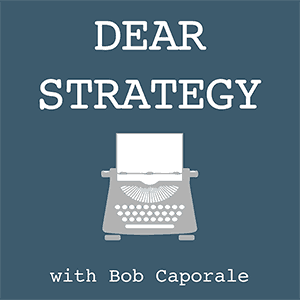Dear Strategy:
“In a rapidly changing market, with a heavily data-driven organization, what are some recommendations to achieve a timely, adaptable strategic plan? How do you avoid analysis paralysis, but still arrive at a solid path forward?”
“Analysis Paralysis” is one of those funny little catchphrases that people in large companies like to use when they feel like they are being asked to collect too much information. And although I don’t want to completely discount the validity of this little saying, I will offer up the perhaps less popular view that it is sometimes easier to paint oneself as a victim of unreasonable corporate requests rather than just buckle down and do the work that’s required to put together a decent strategic plan.
Yes, it is technically possible to get so caught up in data gathering that you never actually move on your plan. But, unfortunately, I find that, more often than not, the exact opposite is what really happens. That is – product managers put together their plans without doing enough homework. Now, before everyone jumps on the dislike button (even though we don’t really have one on this site), let me offer up a possible root cause explanation that might make you feel just a tad less defensive.
Product managers just don’t have enough time – or, should I say, they don’t make enough time – to plan. Let’s face it, companies need revenue to stay afloat. And when faced with spending time on immediate gains versus long-term gains, the immediate gains will win every time. Every. Single. Time.
So, what is the solution to this little dilemma?
Product managers simply need to make time for the plan. I close every show with this line, which should tell you something about just how strongly I feel about it. One easy way to do this is to put planning time on your calendar. Go ahead and set aside 4-6 hours per week of non-negotiable planning time on your calendar to research customers, competitors, and industry/market trends. You might even find it easier to stick to if you set aside that time with a small strategic team. But whatever you do – keep that appointment every week.
Schedule other meetings around it. Treat it just as you would if your CEO had scheduled that time for you. “Analysis Paralysis” will only be a problem if you try to cram all of your analysis into an unreasonable time frame – like, for example, 2 weeks before your strategic plan is due. But if you spread out your analysis over time, not only will your plan evolve more naturally, but the once dreaded data gathering process will never stop you in your tracks again.
Listen to the podcast episode
Dear Strategy: Episode 003

###
Bob Caporale is the author of Creative Strategy Generation and the host of the Dear Strategy podcast. You can learn more about his work by visiting bobcaporale.com.





